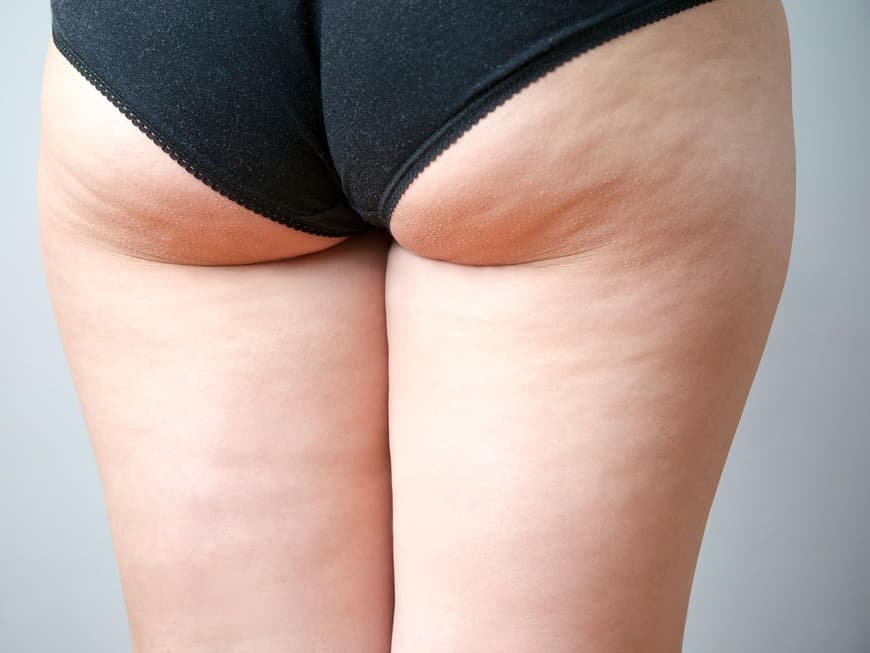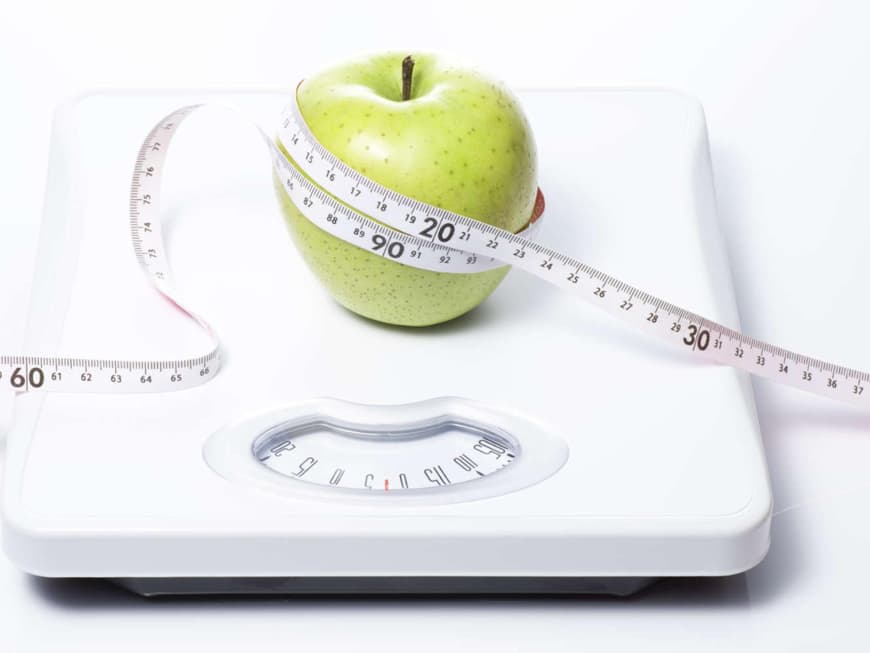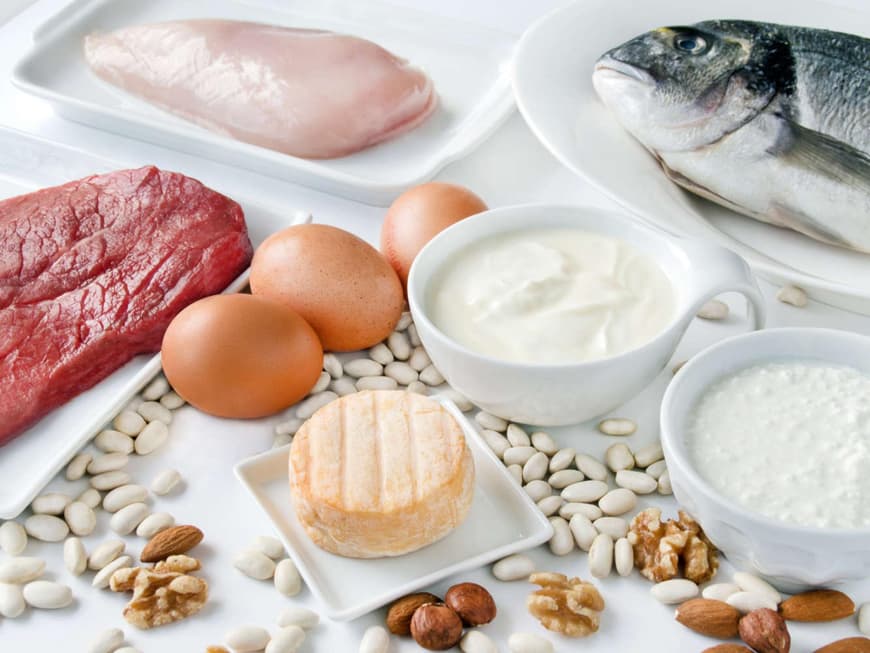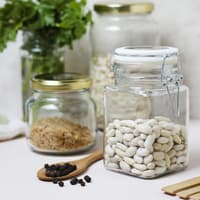Weak connective tissue: not just a matter of appearance
Weak connective tissue is more than just a beauty problem. It is not just there to keep the skin firm. It runs through the entire body, surrounding organs, muscles, blood vessels and nerves and even the entire body itself with a protective sheath. It also stabilizes all parts, keeping them in shape and in the right place in the body. With its collagen fibers, connective tissue can store water and thus give the skin firmness, while tightening the embedded elastic fibers. Weak connective tissue, on the other hand, makes our skin look saggy, wrinkles form or we develop the unpleasant orange peel skin (cellulite) - you can practically see the enlarged fat cells, also known as dimples.
As already described, connective tissue consists primarily of molecules with a fiber-like structure. Potassium chloratum forms this fibrous material by combining the body's own protein compounds, which are built up by calcium phosphoricum, into long-chain molecules. They then form the structural framework of the fiber-rich (colloidal) connective tissue.
Also interesting: Adhesive fascia - how the tissue becomes strong again
Symptoms: Lack of elasticity - orange peel skin due to weak connective tissue
Weak connective tissue therefore not only leads to the dreaded orange peel skin, but also promotes organ prolapse in the pelvis and bladder weakness in women and a tendency to hernias in men. In both sexes, the weakness of the connective tissue promotes small spider veins and varicose veins on the lower legs and thighs. A prolapse of the uterus can also result in connective tissue weakness. The muscles can be strengthened with appropriate pelvic floor training. Even haemorrhoids are promoted by weak connective tissue. However, it is mostly women who suffer from the dreaded orange peel skin due to the structure of their skin.
The condition of our connective tissue depends in part on our genetic make-up. The ravages of time also gnaw away at it. In addition, hormonal changes during the menopause weaken the tissue. But a healthy lifestyle can certainly help to keep connective tissue and skin firm and elastic for as long as possible.
Read also:Exercises against cellulite: what really helps
Causes of connective tissue weakness: Why does the connective tissue sag in the first place?
There are three main reasons for this:
1. hormones: oestrogen and progesterone ensure firm connective tissue. When the oestrogen level drops during the menopause, it becomes flabbier. Young girls are also affected by hormonal changes when they reach puberty - the body begins to shape itself and growth is in full swing. Due to the hormonal surges, teenagers usually develop a strong appetite with the result that the weight gain causes the skin to tear and can lead to the unpleasant stretch marks.
2. medication: Cortisone in particular weakens the tissue. But the pill can also lead to hyperacidity and thus to cellulite.
3. genes: Weak connective tissue is genetic. It is not only a cosmetic problem, but also a medical one.
Strengthening weak connective tissue
To strengthen it, its blood circulation must be increased. This improves the supply of nutrients and promotes the removal of excess lymphatic fluid. External applications such as dry-brush massages, Kneipp thigh casts and alternating showers are therefore advisable. However, a balanced diet and a healthy amount of exercise are even more important. This builds up muscles so that the entire tissue is tightened. When eating, you should reduce animal fats and white sugar and make sure you get enough vitamins.
Also interesting: Sagging breasts: 5 tips for firmer breasts without surgery
Strengthening weak connective tissue Home remedies: 12 tips for weak connective tissue
1. well nourished with the right diet
Sugar is poison and should be avoided. It promotes minor inflammation and weakens the cell walls. Silicon supports the tissue, it is a component of silicic acid and is found in oats, beans and dates, among other things. Siliceous earth contains silicic acid - it is also available as a ready-made preparation.
2. connective tissue weakness: collagen makes the tissue plump
The protein is produced by the body and can also be absorbed through the diet. Collagen is found in meat and fish, cabbage and soy, among other things. Vitamin C promotes the body's own collagen production.
3. take alternating showers
They stimulate the circulation and are also perfect for our connective tissue. Always move the shower jet from bottom to top. Start at the feet and repeat the procedure three times.
4. regular exercise is a firming agent
Cycling, walking, jogging and swimming are best. You should also walk for 30 minutes every day, if possible. And: take the stairs as often as possible!
5. gently get rid of water retention
Lymphatic drainage releases water retention in the tissue and also tightens the connective tissue. The therapy is offered by physiotherapists and beauty salons (approx. 25 euros, in some cases covered by health insurance). Patients with a risk of thrombosis or cardiac insufficiency should talk to their doctor beforehand.
6. balancing the acid-base balance
In the long term, a diet that is low in alkaline substances clogs the connective tissue. Fruit and vegetables are very rich in alkaline substances, whereas sausage and red meat are more acid-forming and should be avoided. Food supplements can also help to restore the acid-alkaline balance (e.g. Basica, pharmacy).
7. field horsetail strengthens the fibers
A tea made from the medicinal plant ensures good blood circulation, boosts the metabolism and thus supports the connective tissue. Pour 250 ml of cold water over 2 teaspoons of horsetail herb (pharmacy) and leave to infuse for twelve hours.
8. giving up nicotine makes the cells elastic
Smoking also damages the collagen fibers, as nicotine constricts the blood vessels and thus restricts blood flow.
9. drink about 1.5 to 2 liters of water daily
This ensures that the supporting tissue is well supplied with fluid and metabolic waste products can be removed.
10. get rid of excess kilos
Excess weight wears out the tissue and weakens it. Therefore, too many kilos should be avoided. But beware of the yo-yo effect: weight fluctuations put additional strain on the connective tissue.
11. yoga and relaxation exercises
Stress makes the fibers hard and brittle - yoga and relaxation exercises loosen them up.
12. cupping strengthens the connective tissue
Ancient and effective: special cupping glasses are used to apply negative pressure to the skin - this improves blood circulation and strengthens the fibers permanently.
13. stop smoking
Smoking not only damages the lungs, but also the connective tissue. Nicotine damages the elastic cells in the body, causing premature sagging of the skin. Smokers' faces are particularly marked by years of cigarette consumption, and wrinkles are typical. The blue haze also leaves pale skin.
14. build up muscles in a targeted manner
Sport and exercise generally help, but targeted muscle building in particular ensures that the skin remains firm and fatty tissue is reduced - it is simply better padded due to strong muscles.
Sagging connective tissue during the menopause
Women aged 60 and over in particular struggle with sagging skin on the arms, neck and décolleté. On the one hand, less collagen is produced with age, which ensures firm connective tissue. Secondly, as already mentioned, oestrogen levels also fall due to the menopause. By taking silicon (silicic acid), you can support the collagen fibers from the inside and thus strengthen the connective tissue fibers. To do this, however, you should use the home remedies described, as you cannot fight cellulite with one remedy alone. Silicon is available as tablets from Effective Nature or Naturtreu, for example.
This might also interest you:











